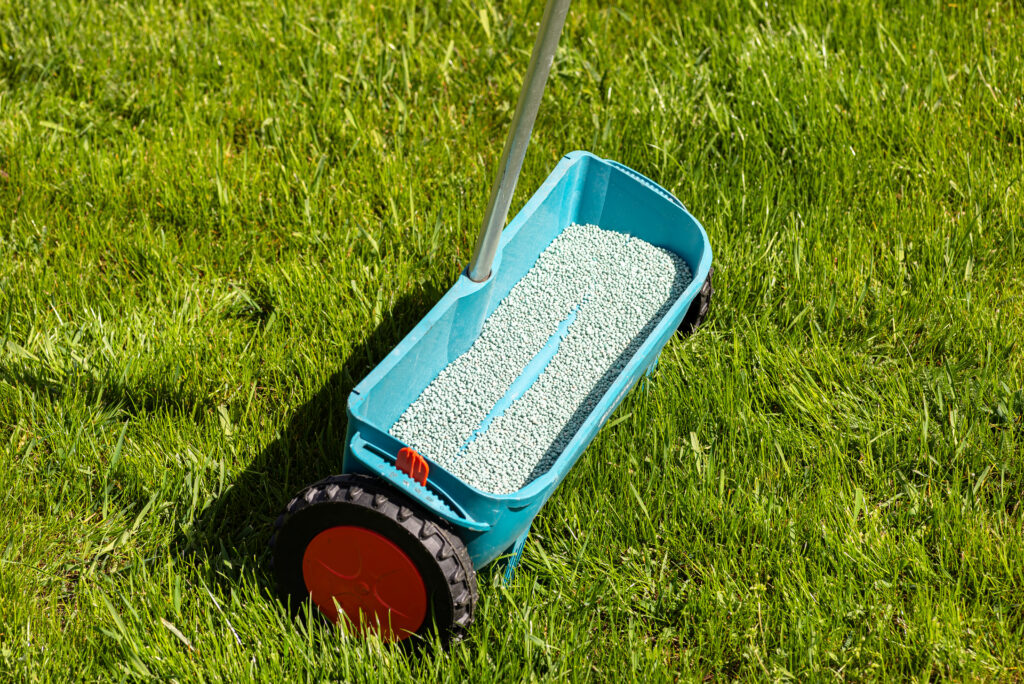Essential Fertilization Tips for Healthy Natural Lawn Grass
Maintaining a rich, green lawn with natural grass necessitates more than just consistent watering and mowing. Fertilization plays a critical role in ensuring your grass receives the nutrients it needs to flourish. Correct fertilizer improves the overall health, color, and growth of the grass, transforming your lawn into the neighborhood’s model. This blog post will go over basic fertilizing guidelines for preserving distinctive, natural lawn grass.
1. Know Your Soil Demand
First of all, you should be aware of the particular requirements of your soil before starting any fertilizing program. The nutrient contents of different soil types vary. A soil test will give you important information about your soil’s pH level, nutrient deficits, and organic matter content. This will help you choose the proper fertilizer mix catered to the demands of your lawn. Natural lawn grass grows best in a balanced pH range, usually between 6.0 and 7.0.
2. Select a suitable kind of fertilizer
For natural lawn grass, there are basically three fertilizer options: Made from natural components including compost, bone meal, and manure, organic fertilizers are perfect for encouraging healthy root development and strengthening soil structure. They slow down the release of nutrients, reducing the burning danger on your lawn. Gradually releasing nutrients over time, slow-release fertilizers guarantee a consistent supply of nutrients for the grass. This keeps the grass healthy all season long and helps prevent unexpected growth spurts. Quick-acting liquid fertilizers that the grass can readily absorb are those. Still, they should be used more regularly than slow-release choices. Your lawn’s particular requirements, the time of year, and your inclination for organic or synthetic choices will all affect the appropriate fertilizer you use.

3. Timing is really everything
Just as much of a factor is understanding when to fertilize is just as important as knowing what to apply. The optimal time to fertilize natural lawn grass depends on the type of grass; the growing season is the best time to do so. Fertilize cool-season grass early in spring and early in fall while it is actively growing. Fertilize warm-season grasses in late spring and early summer, when they begin to flourish at higher temperatures. Avoid fertilizing during the summer because it stresses the grass and fuels burning. Late fall fertilization is not advised for warm-season grasses either since they start to become dormant.
4. Mowing Before Fertilizer: Use the 1/3 Rule
Mow your lawn using the 1/3 rule—that is, never trim more than one-third of the grass blade length at once before adding any fertilizer. This ensures that the grass’s leaf area is sufficient to capture nutrients. Mowing before fertilization also facilitates more efficient fertilizer application, hence enhancing nutrient absorption.

5. Water Right After Fertilization
Following fertilization of your natural lawn grass, watering is a crucial step. Correct watering lets the fertilizer break down and lets it pass through the ground and get to the grassroots. These irrigation pointers should help you keep in mind: This helps wash the fertilizer off the grass blades and into the soil, thereby reducing the risk of burning. Steer clear of overwatering, as too much water might wash away the fertilizer before it absorbs, squandering time and money. To promote deep root development, water deeply and seldom. Early morning water helps to reduce evaporation and allows the grass to absorb nutrients throughout the day.
6. Apply fertilizer Equally
Uneven application of fertilizer may result in patchy growth, with some areas receiving more nutrients than others. For a consistent application: For finely distributed fertilizers, use a broadcast spreader. This instrument guarantees constant coverage all across the grass. For liquid fertilizers, use a hose-end sprayer or backpack sprayer to move methodically around the entire area. Overlap: Slightly when distributing, but steer clear of repeatedly visiting the same area as this could cause overfertilization and even grass burn.
7. Don’t overindulge
Overfertilizing is a common mistake that can damage your natural lawn grass. Excess fertilizer can cause nutrient imbalances, more thatch, and possibly grass damage. Always use the advised rules on the fertilizer packaging; errors are on the side of caution. In lawn fertilization, less is generally more.
8. Track and correct as necessary
The demands on your lawn will vary all year long. Check your grass’s general health, color, and rate of growth often. If you notice yellowing, thinning, or other signs of nutrient depletion, it may be time for another fertilizing cycle. It might not need to fertilize as often, though, if the grass seems healthy and is growing nicely.
9. Add additional organic matter
Apart from consistent fertilizing, think about incorporating organic matter, such as compost, into your grass. Organic matter increases water retention, helps to improve soil structure, and stimulates beneficial microbial activity. Once or twice a year, top-dressing with a small layer of compost can keep your natural lawn grass looking its best and provide consistent nutrients.
10. Think about lawn aeration
Making tiny holes in the ground allows air, water, and nutrients to more readily reach the grassroots. This technique helps the fertilizer go deeper into the soil, making it particularly useful before fertilization. Once a year, aerating your lawn will help boost root development, increase nutrient absorption, and produce a better lawn overall.
In essence
Maintaining a healthy natural lawn grass calls for a mix of correct fertilizer, watering, mowing, and observation. Following these basic Natural lawn grass fertilization tips will help you to produce a rich, vivid lawn that not only looks fantastic but also enhances the surroundings. Recall that the basis of a lovely outdoor space is a well-fertilized lawn; hence, spend the time and effort required to accomplish it right.
I recommend checking out:
- How to plant lawn grass: A Quick Guide
- Mowing Heights By Season And Grass Type
- What Is the Best Warm Season Grass for Your Lawn
- Natural Weed and Grass Killer Recipe for a Chemical-Free Lawn
- What type of machine is used to cut grass?
- 5 gorgeous flowering plants to bring home in summer
- 10 Stress Relieving Indoor plants for home
- 10 plants you can easily grow in a bottle
- 5 Easy Tips to Maintain a Tulsi Plant at Home
- 5 Medicinal Plants to Grow at Home
- 10 palm plants to grow at home
Last Updated on 1 year ago by Anjali Mehra Ph.D. in Horticulture (Punjab Agricultural University)
- Grass Types that Survive Frost & Snow (Uttarakhand-Specific) - December 6, 2025
- Low-Water Grass Varieties for Hilly Homes in Uttarakhand - December 1, 2025
- Mexican Grass vs Bermuda Grass – Which is Best for Indian Lawns? - November 28, 2025
